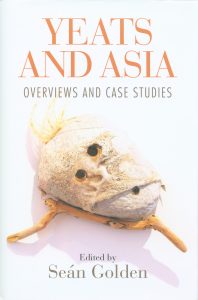Yeats and Asia. Overviews and Case Studies
Cork University Press 2020
edited by Seán Golden

The association of Yeats with Asia suggests references to Byzantium, Theosophy, the influence of Mohini Chatterjee, Occultism, Rabindranath Tagore or the Upanishads, Nōh theatre, masks or his fugitive use of Zen koans, and the gyres as a version of Yin and Yang. Yeats made explicit references to Asian matters in his works, like the Buddha in ‘The Statues,’ as well as implicit references that might be evident to Asian readers but otherwise opaque, like the ‘polished mirror’ in Per Amica Silentia Lunae.
There is also the vexed and vexing question of ‘Asia’ itself’. For the ancient Greeks it was the far shore of the Aegean Sea, the opposite and ‘Other’ of their own ‘Europe,’ long before Edward Said called attention to the implications and consequences of ‘Orientalism’. Many experts doubt that Yeats ‘correctly’ understood the Asian cultural references that he cherry-picked for his own purposes. Others doubt that it really mattered, since he turned everything he touched to his own idiosyncratic use anyway. These essays revisit the roles of West, South and East Asia in his work and revise the theoretical bases that have been applied to his use of Asia in the past.
ISBN: 9781782053972
Cover image: Kate Mac Donagh, ‘Blind Man’ mixed media courtesy of the artist